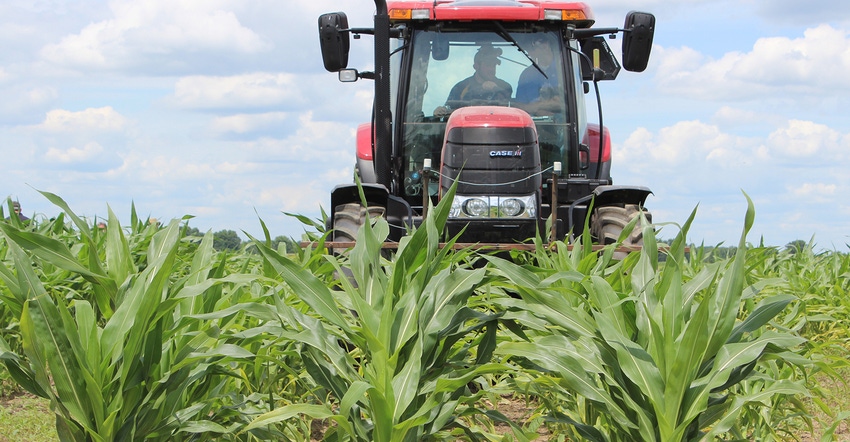
Today’s corn hybrid genetics have not changed the need for late-season nitrogen applications. That is the message University of Missouri Extension agronomist Peter Scharf shares with farmers across the state.
Scharf and farmers have heard from those who say modern corn hybrids really don’t need late-season nitrogen applications. He’s also listened as those with opposing views have raved about the improved response modern corn hybrids have to late-season nitrogen. So, he is setting the record straight for growers.
“I think that saying you don’t need late-season nitrogen is silly,” Scharf says. “If corn doesn’t have enough and it is holding back yield, you need it. But it’s not like the genetics has changed our need for it.”
Historical data
Scharf points to a nitrogen application study out of Indiana that looked at corn hybrids spanning nearly 70 years, from 1946 to 2015. For it, researchers used three different management protocols.
One study placed 50 pounds of nitrogen at V4 growth stage and then 150 pounds at tasseling. The second put 150 pounds at V4 and 50 at tasseling. The third placed all 200 pounds at tasseling.
“When you do the statistics from hybrid decade to hybrid decade, all the hybrids gave the same response to this, which was no different,” Scharf says. Over the years, all hybrids showed a 10% yield loss when nitrogen was applied at tasseling. “If your waiting until then to put the first shot on,” Scharf notes, “it is an awful long time.”
Research also showed how much of the nitrogen in the grain was taken up before versus after silking. Scharf says results showed nitrogen pulled by the roots out of the ground after silking averaged 45% in the 1990s, compared to 42% in the 2010 era. He contends the more modern hybrids are not better at getting nitrogen out of the ground and putting it into the grain.
However, there is one area farmers may see a difference — movement inside the plant.
Current highlights
“Now the thing that the modern hybrids are better at is cleaning nitrogen out of the stalks,” Scharf explains. “The amount that's left in the dead leaves is about the same over 70 years, but the amount that is left in the stalks used to be greater with the old hybrids. The modern hybrids are better at cleaning that nitrogen out and getting it into the ear.”
Scharf says newer corn hybrids are better at taking the “old” nitrogen sitting in the stalk and moving it into the ear. “It is more efficient with that early nitrogen,” he says.
Ultimately, Scharf says corn hybrid genetics is not a reason to be for or against late-season nitrogen. “The reason that you need late-season nitrogen is because your crop is being held back by lack of nitrogen.”
He says it is simple to determine hybrid needs.
“How do you know if it needs nitrogen?” he asks, “Well, it’s lighter green. You look at it. You look from the air in a plane or walk the field.” And then farmers should respond.
Research in Missouri’s bootheel showed corn at 100% green did not make any money on the extra late application — it did not yield any extra bushels. If it there was a little stress showing, about 91% green, farmers can add 10 bushels with extra nitrogen. And if it was fairly stressed, 77% green, the late application added 37 bushels.
“It’s not about genetics,” Scharf says. “It’s about the status of the crop."
About the Author(s)
You May Also Like






